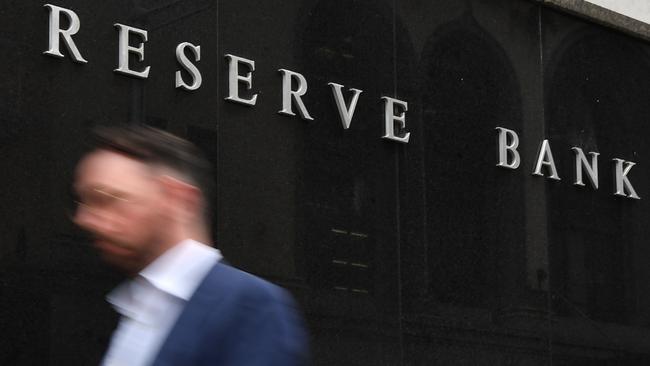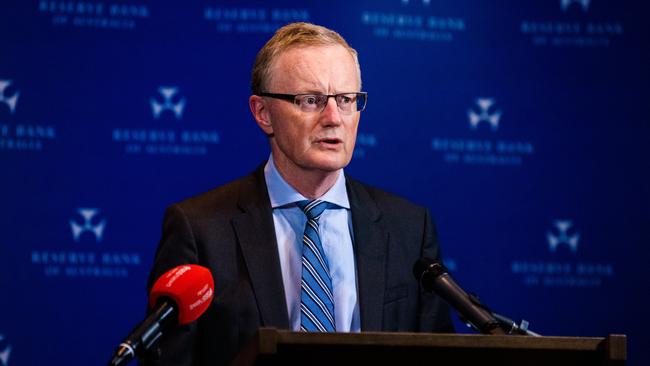RBA flexibility a response to recovery
The RBA’s decisions were broadly consistent with slightly more optimistic forward guidance.

The Reserve Bank has moved to slightly lessen its pandemic-era policy support by reducing the degree of stimulus provided by its unconventional monetary policy tools and giving itself more flexibility to respond to what has so far been a stronger-than-expected economic recovery.
While leaving the official cash rate unchanged at a record low 0.1 per cent (where it has stood since November last year), RBA governor Philip Lowe said the board decided not to extend its yield curve target from the April 2024 bonds to the November 2024 bonds, and it would also taper its weekly bond purchases to $4bn, from $5bn, when the current program ends in early September.
Westpac chief economist Bill Evans said the RBA’s intention to taper its bond buying – the new program will last until “at least” November 11, while its first two tranches were for six months – and its decision to not roll out its yield curve target were “two clear signs that policy is tightening”.
The money market reacted swiftly, pushing the three-year bond yield up almost 10 basis points to a high of 0.465 basis points on the day, although the sell-off began when New Zealand banks started betting that the Reserve Bank of New Zealand would start lifting rates in November.
Following Dr Lowe’s comments, cash rate futures were pricing in a rate rise of 10 basis points by August next year.
The dollar rose as much as 0.9 per cent to a one-week high of US75.99c following an even bigger rise in the New Zealand dollar. Shares fell, with the S&P/ASX 200 index down 0.7 per cent to a two-week low close of 7261.8, with interest rate-sensitive stocks among the biggest decliners.
The RBA’s decisions were broadly consistent with slightly more optimistic forward guidance. The central bank’s “central scenario” was that its precondition for interest rate increases – inflation “sustainably within the 2-3 per cent target range” – “will not be met before 2024”. Previously the RBA had maintained that it was “unlikely to be until 2024 at the earliest”.
However, in his subsequent press conference, Dr Lowe repeated his guidance from June.
“We do not expect the cash rate to be increased until 2024 at the earliest,” he said.
In any case, Dr Lowe’s statement maintained that for the economy to achieve sustained inflation within the 2-3 per cent range, it “will require the labour market to be tight enough to generate wages growth that is materially higher than it is currently”.
In the press conference, Dr Lowe said wages growth would “likely need to exceed 3 per cent”, on the basis that labour productivity continued to increase and that the labour share of national income remained “broadly steady”, in order to achieve inflation sustainably inside its target band.

“The current rate of wages growth is materially less than 3 per cent, and we expect it will be a few years before it increases back above 3 per cent,” he said.
“Further progress on reducing unemployment and underemployment will be needed to get there.”
But he also said: “I want to make it clear that this focus on wages does not mean that we have a target for wages growth, or that wages growth has to have cleared a specific benchmark before we adjust interest rates. The condition for a lift in the cash rate relates to inflation, not to wages.”
Dr Lowe said it was clear that inflation could increase for reasons unrelated to wages, and there would be another example of this in the June quarter, when the CPI inflation rate spikes to 3.5 per cent.
“Even though this will be the experience in the June quarter, history teaches us that sustained changes in the inflation rate are accompanied by sustained changes in the growth unit labour costs, so over time these two do go together,” he said.
ANZ head of Australian economics David Plank said Tuesday’s stance “seemingly opens the way for the RBA to raise interest rates before wages growth lifts to 3 per cent or higher”.
That would “represent a departure from the consistent emphasise that wages growth has to be materially higher for inflation to lift sustainably,” he said.
“But Dr Lowe also emphasised the RBA’s view, in both his prepared remarks and the Q&A, that, ‘for inflation to be sustainably in the 2-3 per cent range, it is likely that wages growth will need to exceed 3 per cent’ (and) that for a rate increase to come before 2024 the RBA would need to be convinced that the structural factors holding back wages growth have diminished.
“Our interpretation is that while the RBA is quite aware it is possible for inflation to be sustainably above 2 per cent even if wages growth is not 3 per cent or higher, it will need some convincing that this mix will hold before it triggers an increase in the cash rate.
“It will be much more comfortable raising the cash rate if wages growth is 3 per cent or higher.”
Dr Lowe’s Q&A session also focused on macroprudential policy, homing in on lending standards and the rising trend of household debt to income.
Dr Lowe said the RBA did not see “evidence of a deterioration” at this point, but “if we saw a large sustained gap between income growth and credit growth we would look at various policies”.
Policies the RBA would consider include the mortgage serviceability buffer, loan-to-valuation ratios and debt-to-income restrictions, according to ANZ’s Mr Plank.
Westpac’s Mr Evans said the tapering of bond purchases foreshadowed by the RBA was “tighter” than his expectation that the RBA would maintain its $5bn purchase pace until December.
“Our expectations entailed a first tranche program of $70bn compared to the stated program of $40bn,” he said. “However, we do expect that the program will be extended beyond November.
“That date will be 10 days after the November board meeting and will follow the November Statement on Monetary Policy, where the bank will have refreshed its forecasts. We fully anticipate that those revised forecasts will support a reduced pace of purchases.”
While maintaining that the bank would start lifting interest rates in the 2023 March quarter, he said November 2021 would be too early to curtail the bond purchase program altogether.
He expects it to continue into 2022 at a gradually reduced pace.
“We expect that the Federal Reserve will announce its intention to begin tapering its bond purchases in September with a lift off date in early January carrying through to mid-2022,” he said.
“The Fed’s actions, once begun, will give the RBA cover should it decide to curtail its purchases even earlier than our expectation of around mid-2022.”





To join the conversation, please log in. Don't have an account? Register
Join the conversation, you are commenting as Logout